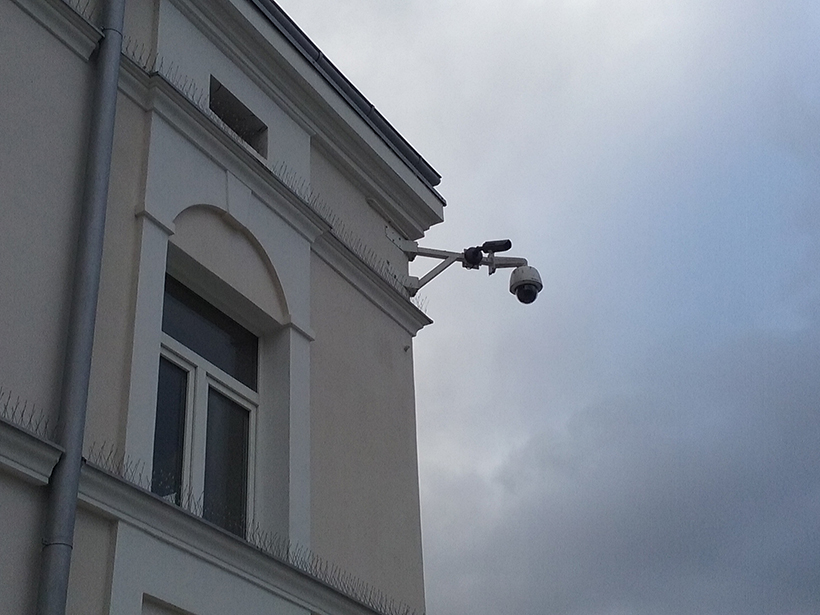Source: Water Resources Research
The same security cameras used on seemingly every busy city block could also capture instantaneous measurements of rainfall intensity: the depth of rain that falls over a given time period. Developed by Jiang et al., this low-cost approach could help inform flood warnings, climate change research, water resource management, and other hydrologic pursuits.
Rain gauges traditionally provide intensity measurements but are often too sparsely spaced for high-resolution data, especially in topographically varied areas like cities. Remote sensing methods such as weather radar are too “big picture” and too indirect to aid real-time flood warnings. Instruments called disdrometers capture instantaneous rainfall intensity but are too pricey for widespread use.
The new, alternative strategy uses “opportunistic sensing,” in which novel insights are gleaned from unrelated sources. Recognizing the ubiquity of close-circuit television (CCTV) cameras, the researchers developed an algorithm that separates a CCTV video still into one layer capturing the streaky shapes of falling raindrops and another layer of the raindrop-free background. Image analysis then reveals instantaneous rainfall intensity.
The researchers tested their new raindrop identification algorithm in a series of virtual analyses. They found that it outperforms previously developed algorithms in separating raindrops from backgrounds with visual disturbances, such as moving cars and swaying trees.
They also tested their overall approach to rainfall intensity measurement in real-world settings during five different rainfall events and found that the approach has satisfactory accuracy over widely varying rainfall intensities. It also has a lower error rate than other camera-based strategies, despite its reliance on lower-quality cameras and testing with real-world scenes that are more complex.
The new approach highlights the possibility of using existing CCTV networks to opportunistically measure rainfall intensity at high resolution and low cost. Such observations could help researchers validate climate models and improve understanding of floods caused by intense storms, especially in urban settings.
The authors suggest several paths for future research, including fine-tuning the raindrop identification algorithm to capture a wider range of raindrop phenomena, such as splashing. Application of artificial intelligence techniques could also enhance the new approach. The research team is now working with the local meteorological department to implement this technology in Shenzhen, China’s “tech megacity.” (Water Resources Research, https://doi.org/10.1029/2018WR024480, 2019)
—Sarah Stanley, Freelance Writer
Citation:
Stanley, S. (2019), Ordinary security cameras could keep an eye on rainfall, Eos, 100, https://doi.org/10.1029/2019EO125677. Published on 10 June 2019.
Text © 2019. The authors. CC BY-NC-ND 3.0
Except where otherwise noted, images are subject to copyright. Any reuse without express permission from the copyright owner is prohibited.

